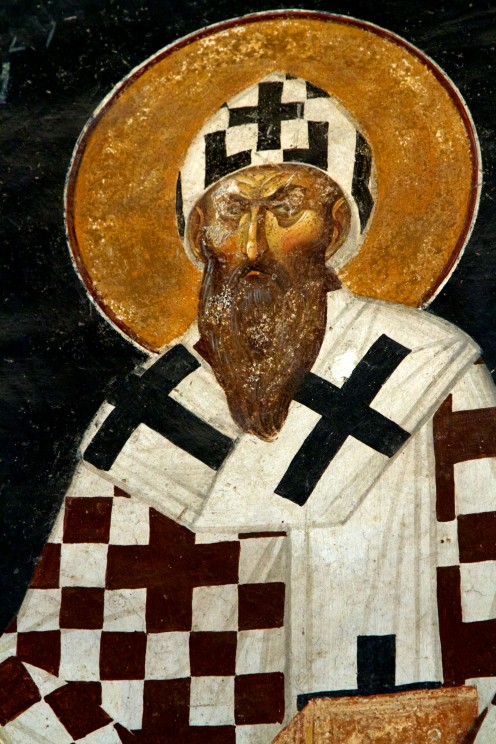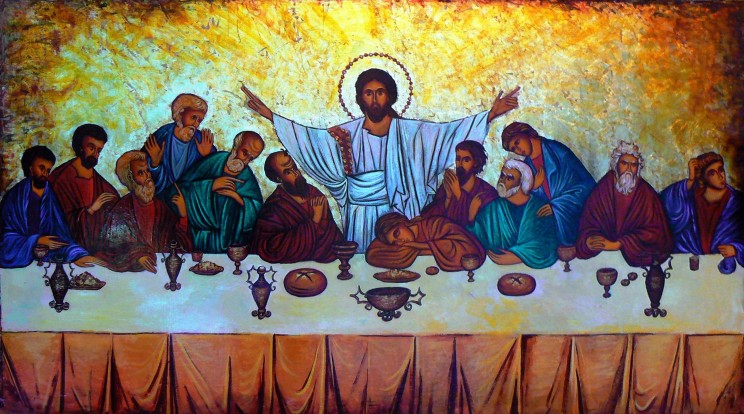It is a well known fact that the Christian church has, in the course of its 2,000-year long history, often been torn with controversy over how to understand those four simple words, ‘This is my body.’
The Orthodox have never been entirely comfortable with the label ‘transubstantiation,’ and at the outset of the Reformation, the Catholic understanding of the Mass was one of the prime issues that provoked Luther to decry the ‘Babylonian captivity’ of the church.
Luther, of course, went on to denounce Zwingli’s view of the Eucharist as vehemently has he had the Catholic one, and slightly later the Reformed followers of Calvin decided that they disagreed with both Luther and Zwingli. The intensity of these debates is understandable in light of the fact that all involved assumed that a correct understanding of the Eucharist had a direct bearing upon the manner in which Jesus was present to his followers.
Was Jesus still here, bringing salvation to his church, or had he departed and left them to get by as well as they could on their own? Defining the nature of this ritual was intrinsically tied to understanding the purpose of this community. Although this story is one often told, the parallels it presents to Christian views on the Bible have often gone overlooked. For the sources of Christian communal identity for the past two millennia include not only a ritual meal but also a written book.

At first this assertion strikes the reader as so obvious it hardly merits mentioning. However, recognizing the importance of this principle accounts for some of the disconnect modern readers of the Bible experience when they attempt to read accounts of scriptural interpretation from late antiquity.
As recounted in Michael Legaspi’s The Death of Scripture and the Rise of Biblical Studies, in the past five hundred years the Bible in the West has undergone a transformation as it was abstracted from its previous home in a unified Christian church and resituated in the context of modern academia.
Such a move would have appeared quite foreign to Christians of an earlier age who assumed that the Bible could not be understood properly apart from grasping its place in the divine plan of salvation centered upon the person of Jesus Christ.
For example, Cyril of Alexandria, the fifth-century bishop of the city that served as the intellectual capital of the Roman world, liked to use a metaphor to explain the Bible’s purpose to his Christian hearers.
In his sermons and writings, he explained the presence of the Bible in the church by stating that Jesus had given this book to his followers, like a shepherd providing his flock with green grass for their nourishment.
Cyril, of course, knew that the Bible was written by countless persons over a vast span of time, and he tried, using the best tools available to him, to attend to that sort of historical detail. But what was most important, in his view, was the fact that when the Bible was read, Jesus himself was present to save, in a manner akin to his presence in the Eucharist.
Whether it was the words of Moses or of the evangelist Mark, when Christians sitting in the basilica in late antique Alexandria heard the scriptures, what they experienced was Jesus himself speaking to them through that myriad of human voices.
And in making this assumption they were following a trajectory already begun in the New Testament itself. Had not the Apostle Paul declared that Christ was speaking in him (2 Cor. 13.3), and did not Jesus himself say that his words were ‘Spirit and life’ (John 6.63)?
For most twentieth-century historians, early Christian exegesis was regarded as unworthy of historical attention due to its failure to attain the standards of modern hermeneutical method.
Imagine the absurd parallel of modern scientists rejecting medieval views on the Eucharist on the basis that those benighted premoderns did not properly understand the chemical composition of bread and wine. Such a dismissal hardly grapples seriously with the way Christians tried to articulate the function of the ritual.

Late antique readers fair somewhat better when seen in their own context. If the Bible is viewed as the written and living voice of Jesus, then the task of interpretation comes to mirror this assumption.
Just as Jesus speaks through the human authors of the Bible, so interpretation must be a process of finding Jesus in those same words, so as to provide spiritual nourishment for Christians seeking to grow in virtue and understanding.
In this way, what Cyril and his contemporaries believed about the Bible determined the way in which they read the Bible as a community, and the consistency of their approach is laudable.
The Bible is open to a great many interpretive approaches, and the plausibility of those methods will always be a product of the community in which the reader is situated. Late antique Christians, who assumed that scripture functioned analogously to the Eucharist, at least managed to find an interpretive method that accorded with their communal experience of this book.
The post ‘This is my word’: Jesus, the Eucharist, and the Bible appeared first on OUPblog.



